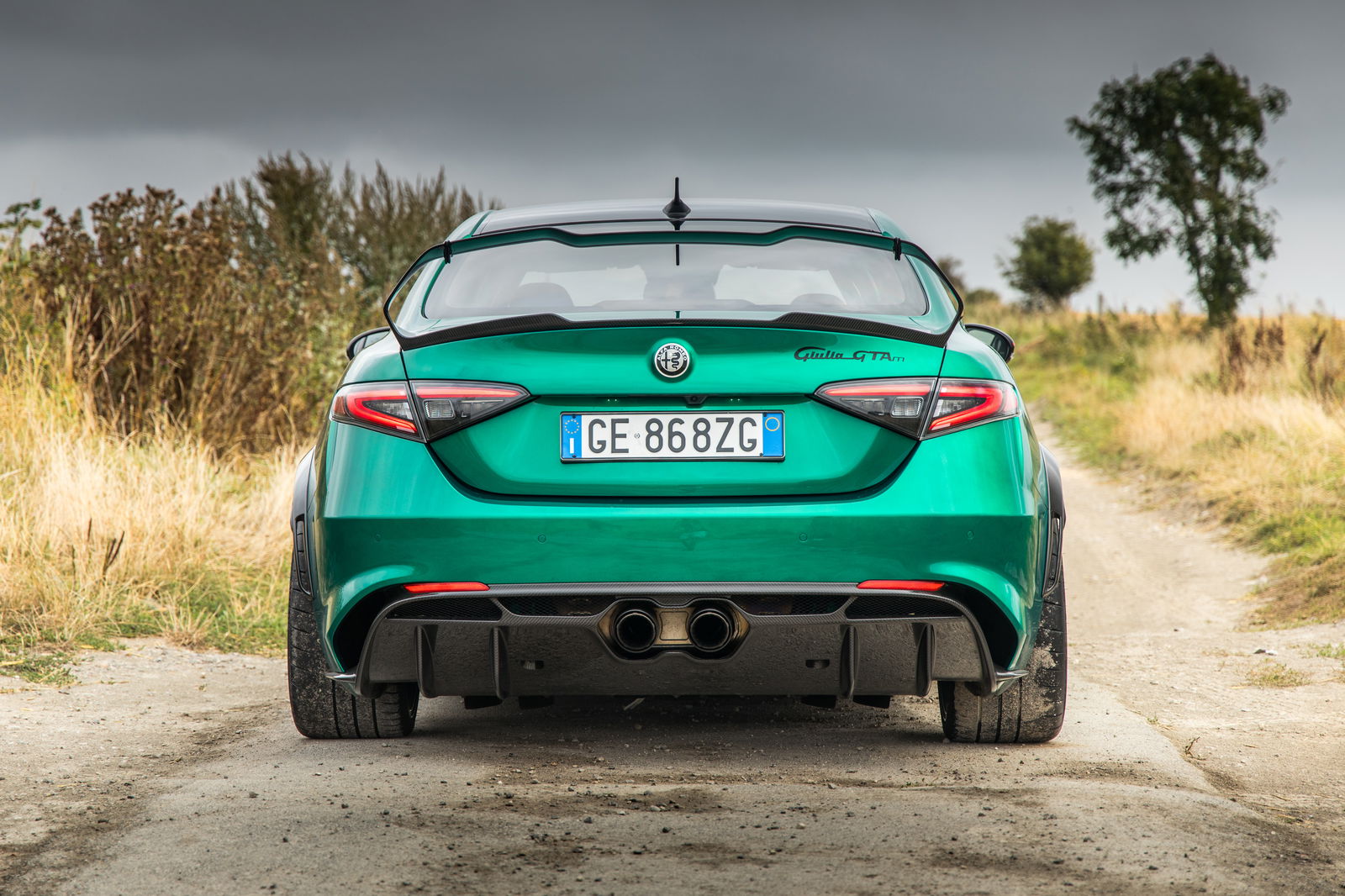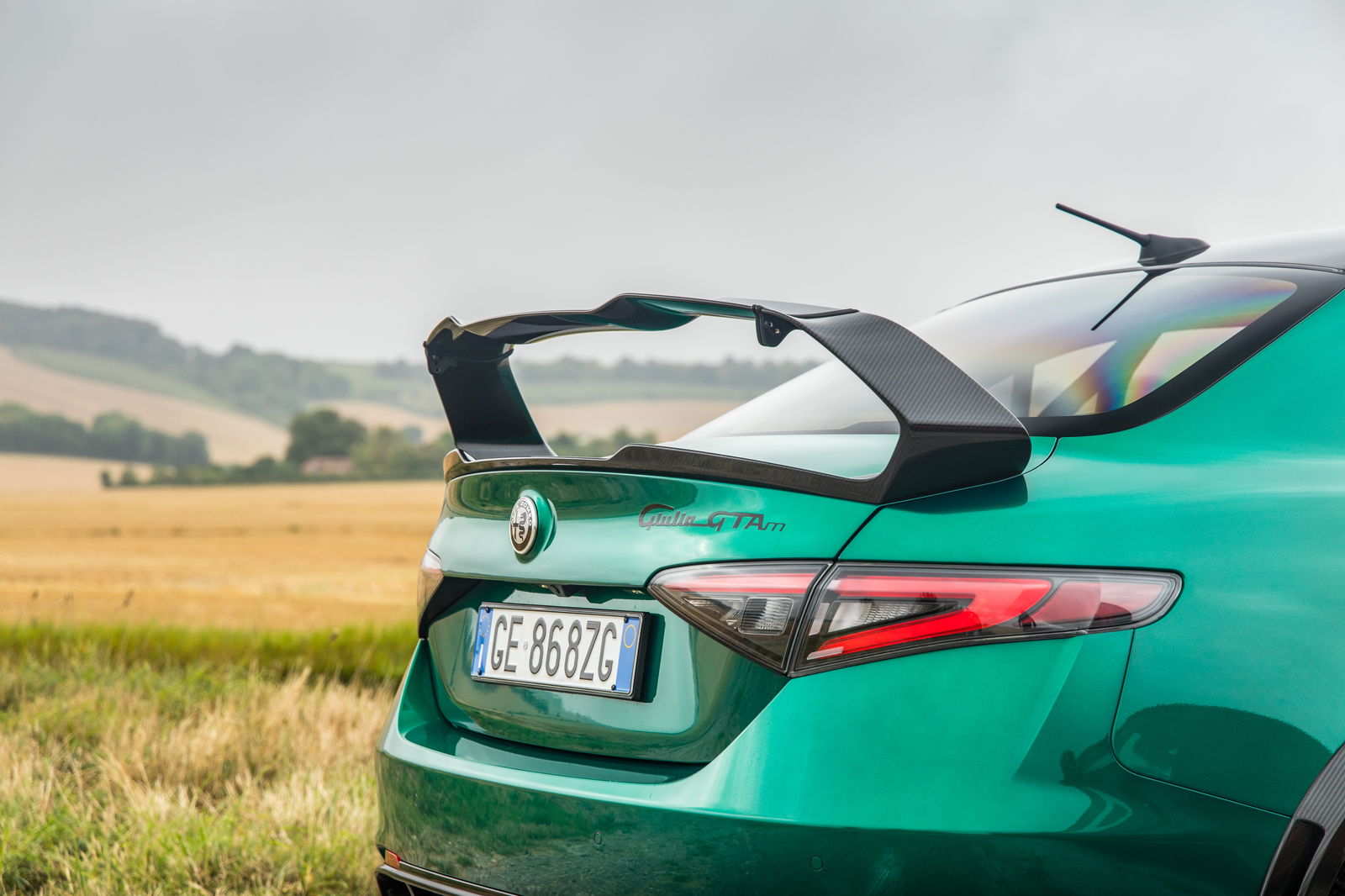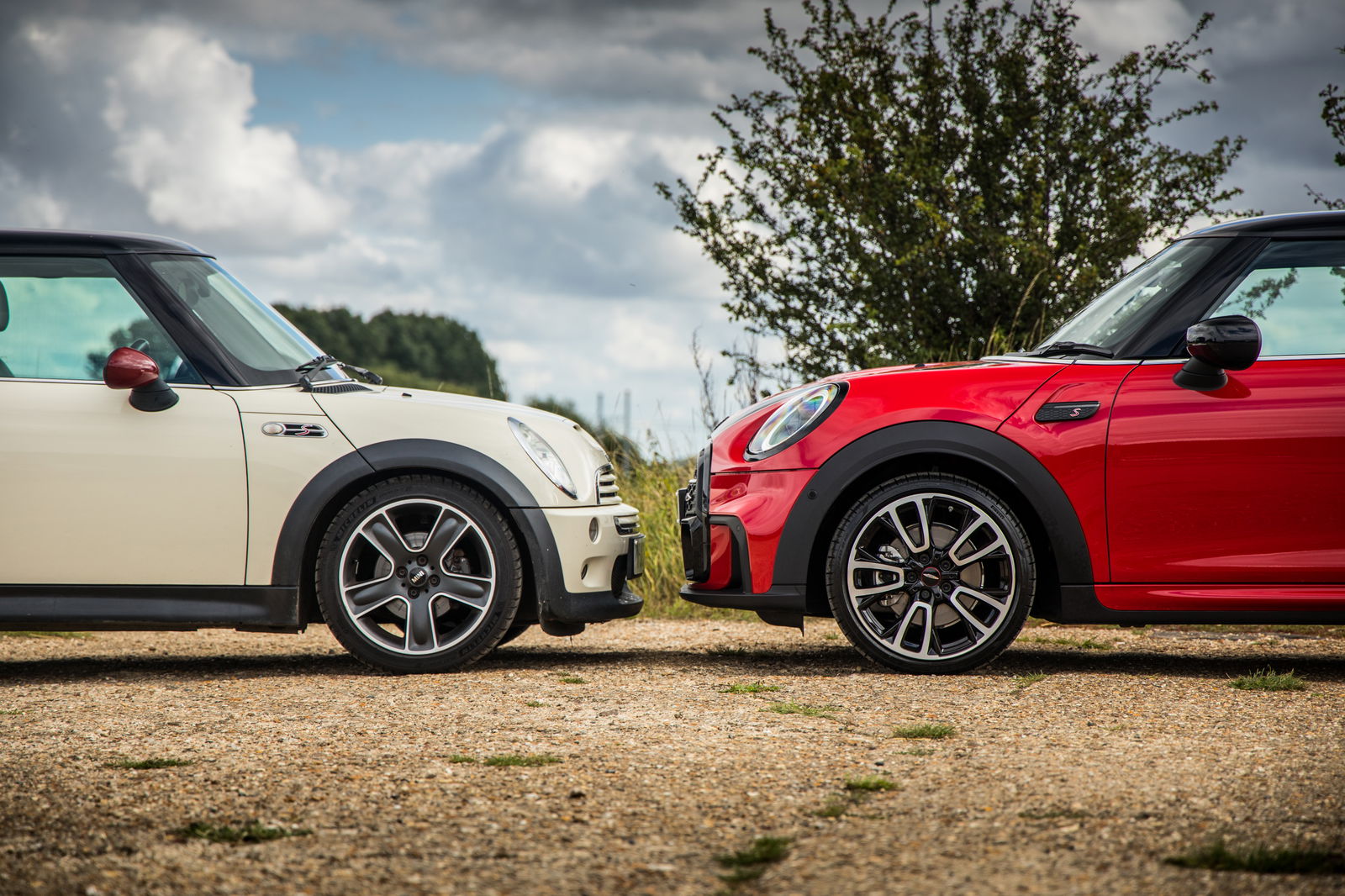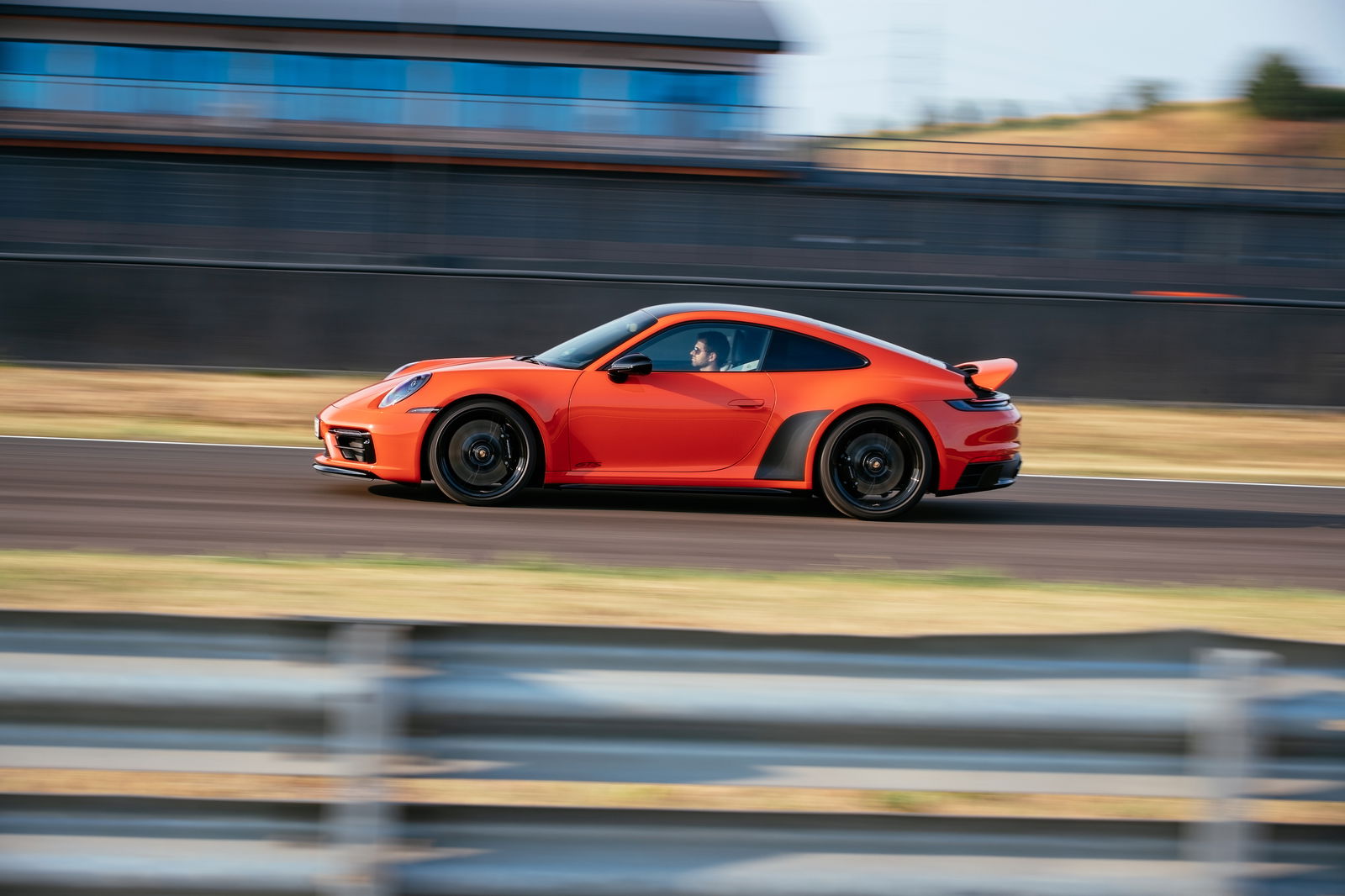Alfa Romeo Giulia GTAm Review: Ferocious, Nonsensical, Superb

Pros
Cons
Alfa Romeo’s dramatic rebirth came around just a little too late. After decades of plugging away with borrowed front-wheel drive platforms and getting mixed results, the beleaguered Italian brand did the unthinkable in 2015 by revealing the Type 952 Giulia with - shock horror - a bespoke rear-wheel drive platform and an all-new 503bhp twin-turbo V6. And all of this stuff is already earmarked for retirement.
Neither the Giulia nor the later Stelvio have been the big sales successes Alfa might have hoped, but they are products that at last do the brand justice. The only trouble is, parent company Stellantis is plotting an electric revolution in which the ‘Giorgio’ platform can play no part. After the current Giulia and Stelvio bow out, Giorgio will be for the chop, and Alfa models will be built on a platform shared with a bunch of other Stellantis models. And no - high-power V6s don’t factor into this plan.

The Giulia GTA and GTAm, then, should be considered a high point of this brief but brilliant era for the company, and thus, the peak of modern Alfa Romeo. Compared to a Giulia Quadrifoglio, both of these cars have track widths that are 50mm wider, sit lower on stiffer springs, and adopt various new carbon fibre body panels.
Along with the carbon you already get on the Q, you also get a carbon front bumper, wheel arches, rear arch inserts and rear diffuser. Thanks to also losing its rear seats and switching the glass side windows for Lexan polycarbonate the GTAm has ditched a whopping 100kg, going nicely with a 30bhp power uplift that brings the total to 533bhp.
It’s the GTAm we’re trying today, which means there’s also a fantastically obscene carbon fibre rear wing on the boot lid, taking up an impressive amount of rear-view mirror real estate. It’s a little like the massive optional wing the old 156 had, but far less incongruous here given the general lairiness of the bodywork. It’s manually adjustable, as is the carbon fibre splitter at the front. The GTAm is a visually arresting thing, particularly finished in Montreal Green.

These aren’t a bunch of small tweaks working together to form something bigger - a concept you’ll sometimes hear us talk about. No, we’re talking about significant changes combining to make something spectacular. Not that this is abundantly clear when slotting behind the wheel - the view out the front looks much like any other Giulia Q, save for a lovely embroidered GTAm logo on the dash. After belting up and setting off, though, the extent of the Giulia’s transformation becomes clear.
With that constantly angry Akrapovic exhaust, the lack of rear seats and the plastic windows, it’s loud in here even at gentle throttle inputs. When those get a little less delicate, the GTAm hurtles forward, quickly and efficiently munching through gears and filling the cabin with a throaty V6 roar mixed with a dash of transmission whine. 533bhp is a lot to task the rear wheels with, but the GTAm hooks up with precious little fuss. You can thank the traction provided by a set of Michelin Pilot Sport Cup 2s cladding the 20-inch centre-lock wheels for that.

Ideally, we would have tested this car a few months ago at Fiat’s Balocco test track, but the joys of Covid isolation rules made that pretty much impossible. The substitute is a set of twisty B-roads in Oxfordshire, so we won’t be fully exploiting the GTAm’s fancy carbon fibre aero stuff today. On the other hand, the suspension’s getting a more thorough test. Initial impressions? Yep, it’s firm.
It fidgeted its way down the small stretch of motorway at the start of my planned route, and now I’m in the country, I have to constantly scan the road surface ahead to prepare myself for fierce suspension compressions. The retuned adaptive dampers are best off left in the ‘soft’ setting, which thankfully remains available even if you’re in dynamic mode. Set like this, it’s just about acceptable on the road, but you still need to keep a constant eye on the state of the tarmac up ahead.

It’s uncompromising, then, but my word, are there rewards to be reached once you reach a corner. The way it changes direction with so little effort is more akin to a purpose-built supercar than a jumped-up saloon car, while the stiffer chassis ensures there’s proper feedback from the super-fast steering. We’re not talking about Porsche 911 GT3-levels of communication, but it’s better than any other modern super saloon we’ve ever driven.
Giant carbon ceramic brakes meanwhile ensure all the speed you want to lose before corner entry is easily scrubbed, although some more progression in the pedal wouldn’t go amiss.
This being the UK in September, it doesn’t stay dry for long. The heavens open, meaning those Cup 2s lose their resolute traction and the GTAm takes on a much more feisty character. A retuned ESP system means the Giulia is quite happy to step out at the rear even when you’re staying away from Race mode, which we certainly are in these conditions.

The GTAm feels composed and balanced when things start to move around at the rear, but there is a sense of vagueness at the start of the transition, robbing you of fair warning for the oversteer on its way. Plus, in the wet, you do sometimes end up with the front washing out too, albeit not by much.
Rejoining the motorway and heading back to return the car, it hits me - for all its ability and boisterousness, this is still just a Giulia. It might not be the smoothest-riding thing, but it’s not painfully stiff either. It still has an infotainment system and a decent sound system which you only have to turn up a tiny bit to account for the noisier cabin. Want to road trip to the other end of the country for a track day? Or better yet, one abroad? By all means - you wouldn’t regret it by the time you reach the destination, and you definitely won’t after putting some laps in.

There’s a whopping-great catch to all this, however - the price. You’re looking at a shade under £150,000 for the GTA, and £154,000 for the GTAm. You could buy a 911 GT3 for that (if you can get on the waiting list), or very nearly a Mercedes-AMG GT R. As incredibly good as the GTAm is, it’s still a saloon car underneath, not a purpose-built sports car like those two, and that makes a difference. Alternatively, you could even buy a Giulia Quadrifoglio plus a punchy version of the Caterham Seven for track day lolz and still be left with a heap of change for petrol.
There is precedent for this - Jaguar expected you to pay £150,000 for the radically transformed SV Project 8, don’t forget. The Alfa feels like a more complete car than the Jag, not to mention a better-looking one, but still, that price remains difficult to fathom.

You can see where the money’s gone, though. Alfa Romeo went absolutely bonkers on this thing, lobbing all sorts at with very little restraint. I’m astonished it was signed off. Philosophers have been telling us for millennia that genius and madness go hand in hand, and few cars exemplify this as much as the GTA and GTAm.
In a few years, when Alfa’s stable is fully electrified and rather homogenous, we’ll look back on this mad moment and smile. Those who were brave enough to buy one especially so.



Comments
I’d have liked a picture of the rear “seat”, or at least where it used to be. If it’s not used up by some cage, then I guess the cargo space has grown quite a bit.